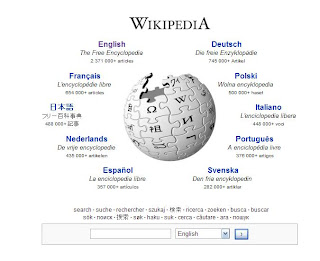Furthermore, it is critical for the ownership of the project to be shared. It will be unlikely that contributors will continue to contribute if the content that is produced ultimately benefits a commercial software publisher.
References:
Furthermore, it is critical for the ownership of the project to be shared. It will be unlikely that contributors will continue to contribute if the content that is produced ultimately benefits a commercial software publisher.
References:
The line between consumers and producers are blurring. This can be observed not only in new media forms such as YouTube, but also through traditional media forms, such as newspapers. Traditionally, news was regarded as generated from established outlets such as the newspaper or television, produced by journalists. Today, news can be accessed from diverse sources and channels produced by citizens and basically anyone that is willing to contribute.
Harrington (2008) states that while there is no definite definition of what news is, ultimately, it is defined as that which keeps citizens informed about the democratic institutions, and other information or events that affect them. It also provides the audience with the information required to make informed choices about the direction of public life.
Audiences of today, armed with empowering technology, have changed the way in which news is consumed, as well as produced. Channels that blend entertainment and news are those that are successful and can reach to the youth audience. Audiences may be seen to engage with the news in different forms. An example of this is The Chaser, a show that mixes serious political issues for entertainment value. Harrington states that the peak for this show is 2.24 million viewers at the peak. Another example as outlined by Turner is Michael Moore’s film Fahernheit 9/11. Through presenting news and current affairs in a credible and entertaining manner, it is able to engage the audience through achieving relevance.
Media users are increasingly able to access news and information through outlets that actively engages them. Fiske states that relevance is largely a matter of content, with the manner of their telling determining their relevance. To achieve relevance, media users are not only more selective about news consumption, but they also generate news content, become producers or produsers. Citizen Journalism, a term defined by Saunders as media produced by non-professionals, are increasingly the form of which young people receive information about news and current affairs. This includes blogs, vlogs such as youtube, podcasts, and corporations using similar formats such as QUT. Through user generated content, viewers are able to have access to wide ranges of news and content, as opposed to only that which is considered important by centralised institutions.
Interactive news encourages viewers to be participants in the process, not recipients of tits products. Fiske in his 1989 article
Through the merging of media users and producers, the abundance of user-led content has allowed for content to be greatly diversified. Through the equality of all willing participants to be able to access and create news that is relevant for them, media democracy is increased greatly.
References:
Fiske, J. 1989. Popular News. In Reading the Popular.
Harrington, S. 2008. Future-Proofing Journalism: Youthful Tastes and the Challenge for the Academy. Journal of Media & Cultural Studies. 1-19.
Turner, G. 2005. Shifting Genres: The trade between news and entertainment. In Ending the affair: the decline of television current affairs in



